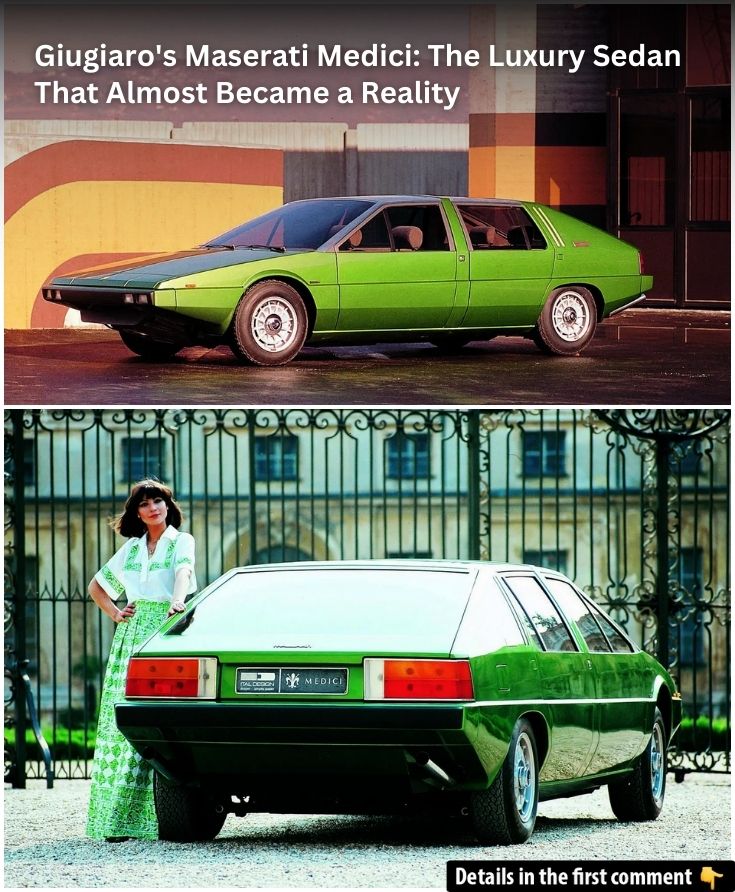Luxury super-saloons are the epitome of elegance, performance, and practicality, often considered essential by the world’s most prestigious car manufacturers. However, few have managed to blend all these qualities as seamlessly as envisioned by the legendary designer Giorgetto Giugiaro. Back in the 1970s, Giugiaro set out to create a car that combined the comfort of a limousine with the performance of a sports car. His vision resulted in the Maserati Medici, a car that, despite its challenges, remains an intriguing example of automotive design innovation. This article explores the creation of the Maserati Medici, the obstacles faced in its design, and how Giugiaro’s persistence led to the refined Medici II.
The Concept Behind the Maserati Medici
Giugiaro’s Challenge: Combining Luxury and Power
The 1970s saw a rising demand for luxury cars that didn’t just offer comfort but also impressive performance. Maserati, a brand known for its sporting pedigree, wanted to enter the luxury saloon market with a vehicle that would rival the best of both worlds: the comfort of an American limousine and the power of a European sports car. Giorgetto Giugiaro, fresh off his success with cars like the Maserati Ghibli, Bora, and Merak, was tasked with this ambitious project.
The concept behind the Maserati Medici was simple but bold: create a luxury sedan that maintained Maserati’s sporting DNA while providing exceptional comfort for passengers. Giugiaro’s design philosophy was inspired by the Medici family, whose success and influence during the Renaissance made them a symbol of power, luxury, and artistic appreciation. The name “Medici” was chosen to reflect these ideals, and Giugiaro set out to blend business acumen and cultural sophistication into his design.
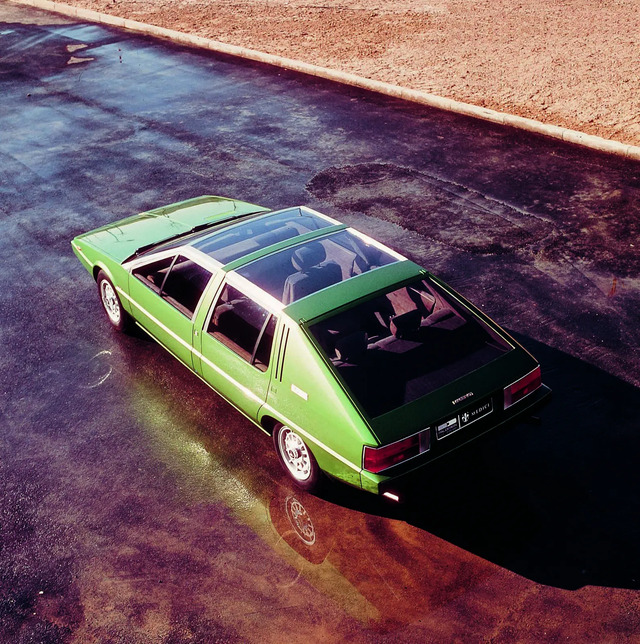
Inspiration from the Medici Family
The Medici family’s legacy inspired Giugiaro in more than just name. Like the family, the Medici car was designed to be a symbol of prestige and luxury, with a strong emphasis on both form and function. The car was meant to be more than just a mode of transport—it was to be a statement of refinement, combining Maserati’s legacy of power and performance with the comfort and elegance typically reserved for executive sedans.
Video
Don’t miss this video on the classic Maserati Medici 2 from 1976. Watch to see this stunning piece of automotive history up close!
Design and Engineering: A Maserati with a Difference

The Maserati Chassis and the 5.0-Litre V8 Engine
To achieve the performance Giugiaro envisioned, the Medici was built upon the Maserati V8 chassis—a foundation already proven by Maserati’s high-performance cars. The Medici featured a longitudinally mounted 5.0-litre V8 engine, a significant upgrade over the 3.0-litre V6 used in the Quattroporte II of the same year. This larger engine ensured that the Medici could provide the raw power necessary for a true luxury sedan while still maintaining the sporty handling Maserati was known for.
Giugiaro also worked to ensure that the Medici’s performance did not sacrifice the comfort expected from a luxury saloon. Despite its performance capabilities, the Medici was designed to offer a ride quality that was more akin to a limousine than a sports car, giving passengers a smooth, comfortable journey no matter how powerful the engine under the hood.
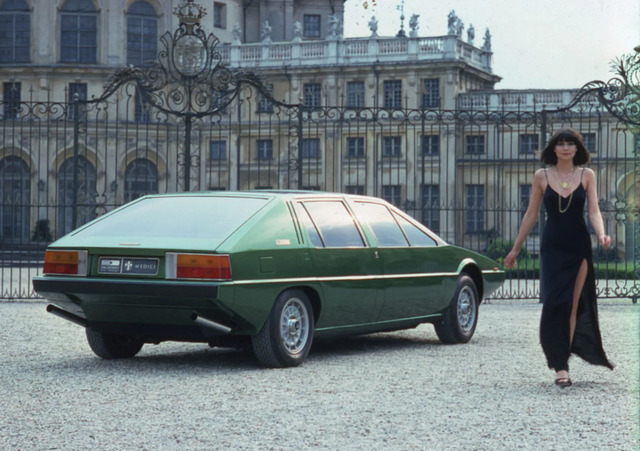
Six-Seater Luxury: The Living Room Layout
One of the most unique features of the Medici was its six-seat configuration, designed to accommodate four living-room style chairs facing each other. The idea was to create an interior that felt more like an exclusive lounge than a traditional car cabin. This arrangement gave the car an air of opulence and social interaction, allowing passengers to converse comfortably during long journeys.
The interior was dressed in velour upholstery, with light-colored fabrics designed to enhance the sense of luxury. Additionally, the glass roof allowed for a bright, airy interior, while also adding a sense of openness that was rare in saloon cars of the time. Giugiaro’s design was all about balance and elegance, creating a space where form and function worked harmoniously.

The Styling Issues: A Car That Didn’t Meet Expectations
While the Medici was an ambitious design, the final product did not meet all of Giugiaro’s high standards. The bonnet of the Medici, designed to be sleek and streamlined, ended up creating an imbalance with the rest of the car’s proportions. The roofline and body did not align as seamlessly as Giugiaro had hoped, resulting in a design that appeared disjointed. This was an anomaly for Giugiaro, whose previous work, including the De Tomaso Mangustaand BMW M1, was known for its flawless proportions and harmonious shapes.
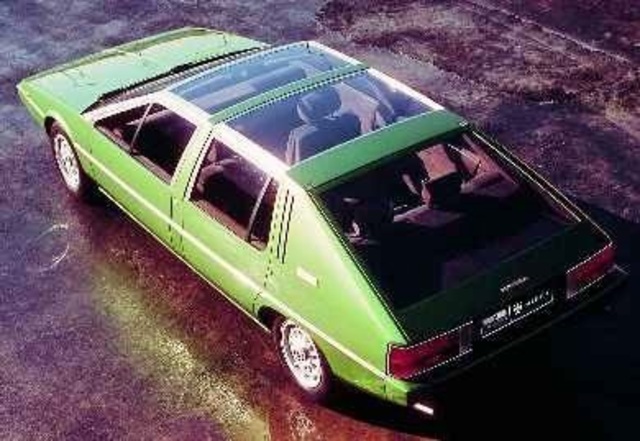
Giugiaro himself was highly critical of the Medici’s final design, noting the odd proportions as one of the car’s main shortcomings. The sleek, elongated front end of the car clashed with its more boxy rear, creating an overall disjointed aesthetic. Giugiaro’s artistic vision had not been fully realized in the Medici, leading to some frustration with the outcome.
Despite these challenges, Giugiaro’s self-criticism led him to revisit the Medici. He was known for his drive to perfect every design, and in this case, he wasn’t willing to let the project go without refining it. In fact, he acknowledged the styling flaws of the Medici in official documentation from his Italdesign studio, openly admitting the mistakes in proportions.
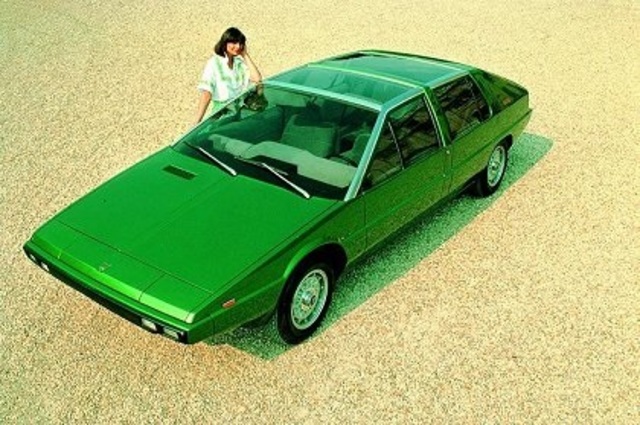
The Maserati Medici II: The Comeback
Giugiaro’s persistence paid off when he returned to the Medici II project, correcting the original model’s styling flaws. He carefully revisited the metalwork, cutting and stitching the design to create a more cohesive, well-balanced car. The Medici II represented Giugiaro’s determination to perfect his creation and bring the car closer to his original vision.
In the Medici II, Giugiaro refined the proportions, elongating the front end and adjusting the roofline to create a more streamlined and harmonious look. The new design improved the car’s overall balance, making it look more cohesive and in line with Giugiaro’s previous works. The Medici II was a testament to Giugiaro’s artistic integrity and his commitment to perfection, showing how even the greatest designers sometimes need to revisit their work to achieve their true vision.

A Luxury Vehicle That Defined a Class
While the Maserati Medici may not have achieved the success it deserved, it had a lasting influence on the development of the luxury super-saloon. Its blend of performance, luxury, and comfort was ahead of its time, and the design elements introduced in the Medici would go on to influence the luxury sedan market in the decades that followed. The idea of a sports car-inspired limousine became more common as automakers sought to combine high performance with the opulence expected from luxury cars.
The Medici perfectly balanced sportiness and comfort, offering a performance-driven ride while maintaining the elegance and luxury of a high-end saloon. This combination of attributes helped set the stage for future vehicles that would attempt to blend these two worlds in a more refined manner.
Video
Conclusion
The Maserati Medici remains a fascinating chapter in the history of luxury sedans, a design that combined performance with practicality in ways that were groundbreaking for its time. Despite the initial styling issues, Giugiaro’s persistence resulted in the Medici II, a car that remains a testament to his artistic vision and commitment to perfecting his designs. The Medici helped pave the way for the luxury saloons that followed, influencing car design well into the 1980s and beyond. Ultimately, the Medici was not just a car but a vision—a vision that showed how great artistic ambition and technical mastery can sometimes lead to beautifully imperfect results.
